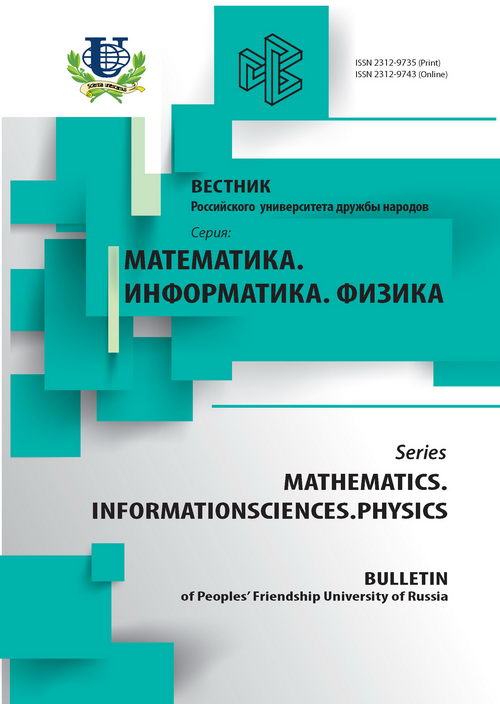Vacuum Creation of Scalar FieldParticles in Conformal-invariant Theory of Gravitation. HamiltonianFormalism and Quantization of Relativistic Systems
- Authors: Pervushin VN1, Grachev DD2
-
Affiliations:
- Joint Institute for Nuclear Research
- Peoples Friendship University of Russia
- Issue: No 4 (2010)
- Pages: 136-144
- Section: Articles
- URL: https://journals.rudn.ru/miph/article/view/8798
- ID: 8798
Cite item
Full Text
Abstract
model of gravitation in the frameworks of the Hamiltonian (Dirac) approach is considered.
The equations, setting dependence of observable density of number of scalar particles on the
initial data and invariant parametre of evolution, are constructed in an explicit form.
Problems of unification of principles of the General Theory of Relativity (GTR) and the
Quantum Theory of Fields (QTF) within a simple example of a vacuum creation of scalar
particles in conformal-invariant model of gravitation [1-3,10-14] are considered. It is shown
that such model can describe both possible mechanism of such creation, and ways of its
generalisation to more complex models, including Standard Model (SM).
It allows to formulate some new approach to quantization of the relativistic gravitational
systems, which essence is in quantization of the phase space of initial quantities as integrals
of motion of the system, obtained by Bogoljubov diagonalization of the motion equations in
Hamiltonian formalism, and in the proof of equivalence of such quantization to transition
from classical commutative variables to their noncommutative quantum analogues.
The above described scheme can be applied to initial manifolds of any finite dimension and
topology.
The equations, setting dependence of observable density of number of scalar particles on the
initial data and invariant parametre of evolution, are constructed in an explicit form.
Problems of unification of principles of the General Theory of Relativity (GTR) and the
Quantum Theory of Fields (QTF) within a simple example of a vacuum creation of scalar
particles in conformal-invariant model of gravitation [1-3,10-14] are considered. It is shown
that such model can describe both possible mechanism of such creation, and ways of its
generalisation to more complex models, including Standard Model (SM).
It allows to formulate some new approach to quantization of the relativistic gravitational
systems, which essence is in quantization of the phase space of initial quantities as integrals
of motion of the system, obtained by Bogoljubov diagonalization of the motion equations in
Hamiltonian formalism, and in the proof of equivalence of such quantization to transition
from classical commutative variables to their noncommutative quantum analogues.
The above described scheme can be applied to initial manifolds of any finite dimension and
topology.
About the authors
V N Pervushin
Joint Institute for Nuclear Research
Email: pervush@thoer.jinr.ru
Лаборатория теоретической физики; Объединённый институт ядерных исследований; Joint Institute for Nuclear Research
D D Grachev
Peoples Friendship University of Russia
Email: dgrachev@orc.ru
Научно-образовательный центр «Спинтроника»; Российский университет дружбы народов; Peoples Friendship University of Russia
References
Supplementary files















